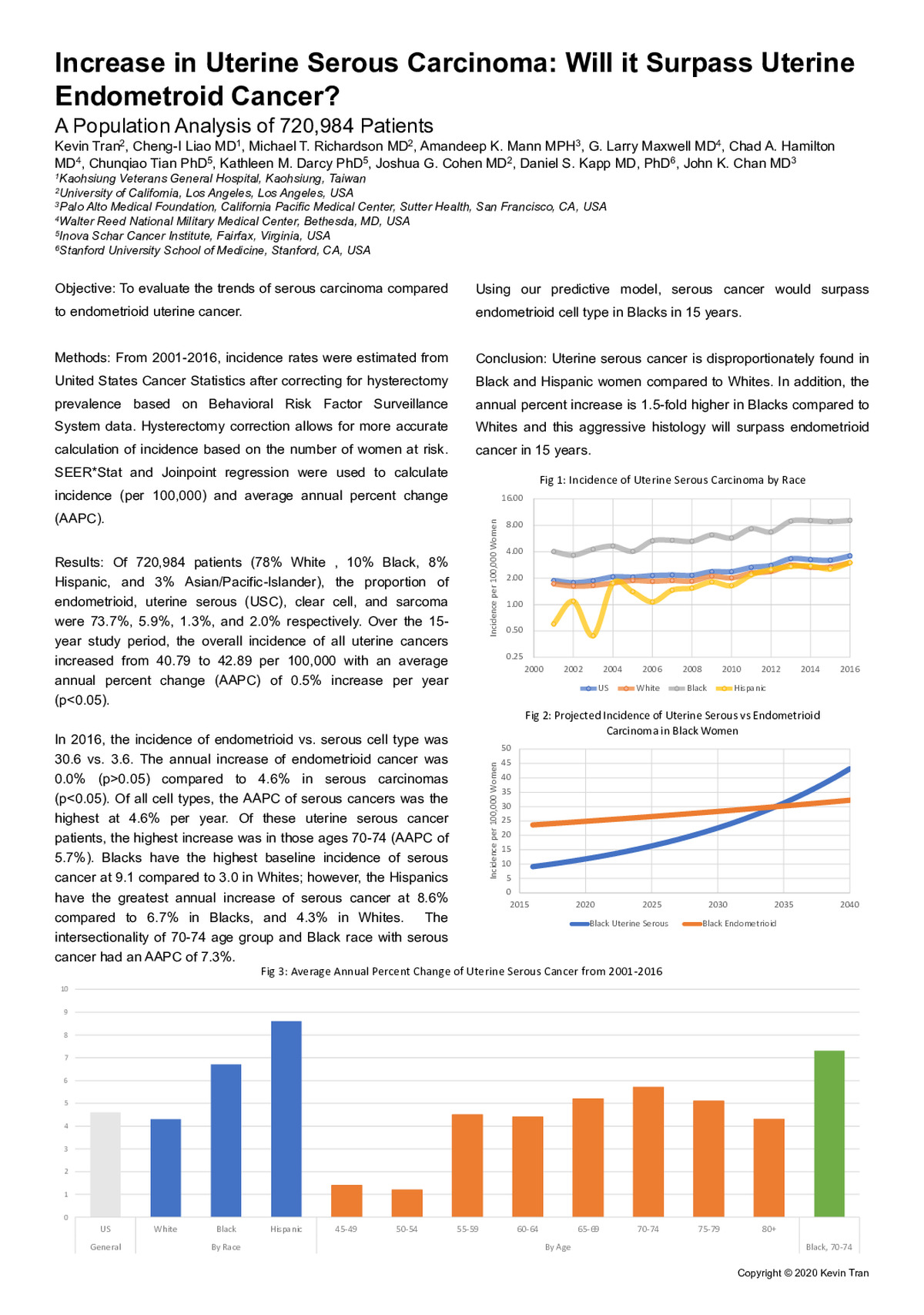-
Author
Kevin Tran -
Co-author
Cheng-I Liao MD, Michael T. Richardson MD, John K. Chan MD
-
Title
Increase in Uterine Serous Carcinoma: Will it Surpass Uterine Endometroid Cancer?
-
Abstract
Objective: To evaluate the trends of serous carcinoma compared to endometrioid uterine cancer.
Methods: From 2001-2016, incidence rates were estimated from United States Cancer Statistics after correcting for hysterectomy prevalence based on Behavioral Risk Factor Surveillance System data. Hysterectomy correction allows for more accurate calculation of incidence based on the number of women at risk. SEER*Stat and Joinpoint regression were used to calculate incidence (per 100,000) and average annual percent change (AAPC).
Results: Of 720,984 patients (78% White , 10% Black, 8% Hispanic, and 3% Asian/Pacific-Islander), the proportion of endometrioid, uterine serous (USC), clear cell, and sarcoma were 73.7%, 5.9%, 1.3%, and 2.0% respectively. Over the 15-year study period, the overall incidence of all uterine cancers increased from 40.79 to 42.89 per 100,000 with an average annual percent change (AAPC) of 0.5% increase per year (p<0.05).
In 2016, the incidence of endometrioid vs. serous cell type was 30.6 vs. 3.6. The annual increase of endometrioid cancer was 0.0% (p>0.05) compared to 4.6% in serous carcinomas (p<0.05). Of all cell types, the AAPC of serous cancers was the highest at 4.6% per year. Of these uterine serous cancer patients, the highest increase was in those ages 70-74 (AAPC of 5.7%). Black women have the highest baseline incidence of serous cancer at 9.1 compared to 3.0 in Whites; however, the Hispanics have the greatest annual increase of serous cancer at 8.6% compared to 6.7% in Blacks, and 4.3% in Whites. The intersectionality of 70-74 age group and Black race with serous cancer had an AAPC of 7.3%. Using our predictive model, serous cancer would surpass endometrioid cell type in Black women in 15 years.
Conclusion: Uterine serous cancer is disproportionately found in Black and Hispanic women compared to Whites. In addition, the annual percent increase is 1.5-fold higher in Blacks compared to Whites and this aggressive histology will surpass endometrioid cancer in 15 years.
-
College
PCC
-
Zoom
https://us02web.zoom.us/j/83954085012?pwd=Wkk1a3ZTK2tUckhxcTJXaURvaXVOZz09
-
PDF

